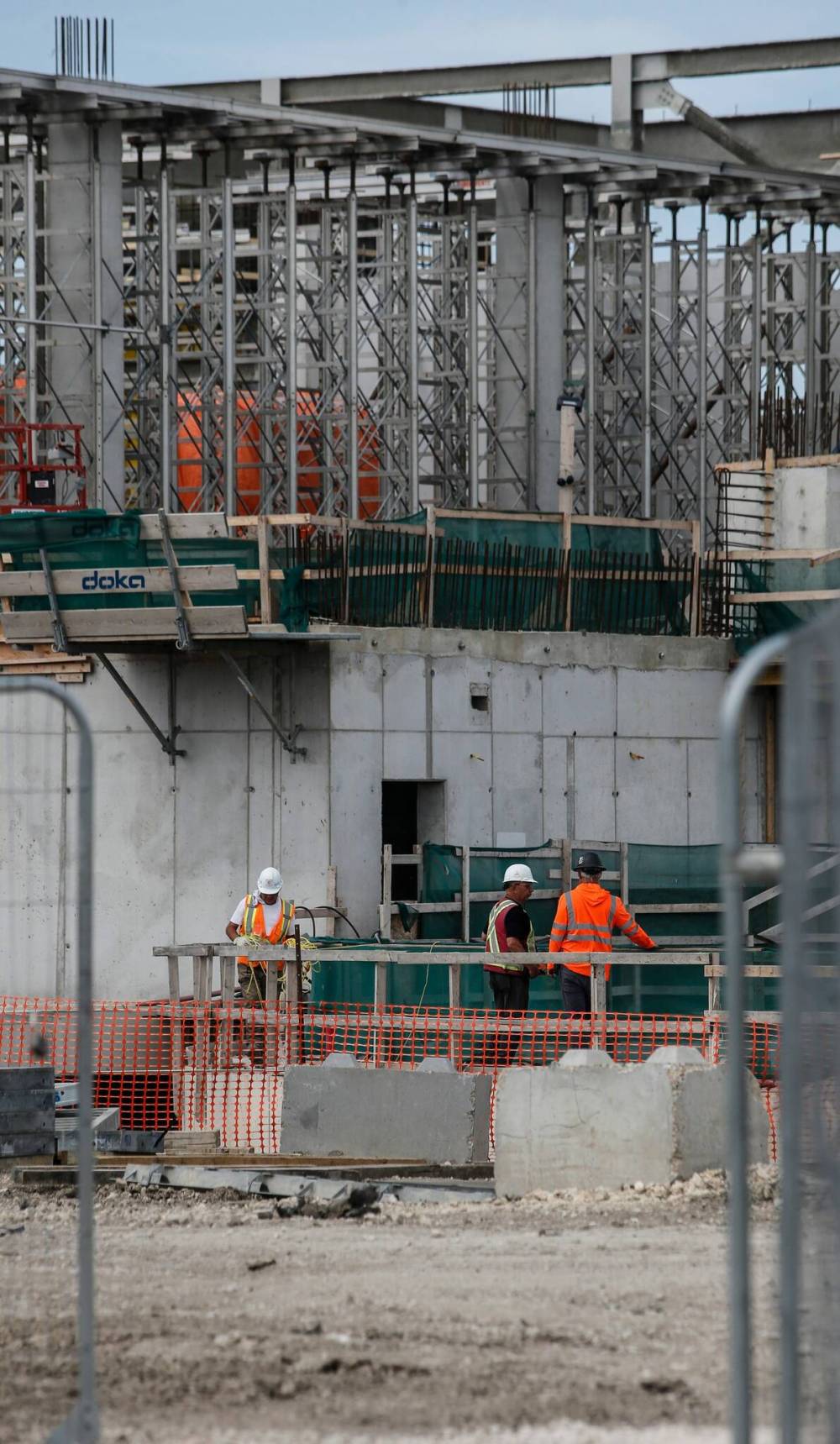
It’s like we’ve heard it all before.
Why? Because we have.
This week, the price tag for Winnipeg’s North End Sewage Treatment Plant rose again: in April, not so many months ago, there was a cost increase of $432 million projected for the project’s second phase, bringing the total cost to $2.3 billion.
JOHN WOODS / FREE PRESS The estimated cost of the north end sewage treatment facility has jumped to $3 billion.
And now, new estimates put the overall expense for the project — originally budgeted at $795 million — as high as $3 billion. The $3-billion figure, which appeared in a report to the city’s standing policy committee on water, waste and environment, has been classed as a “conservative estimate” and a new, potentially higher number is expected later this year.
Completion would be delayed by up to two years, to 2032.
But the sewage treatment plant is far from alone in collosally missing its budget.
Manitoba Hydro’s Keeyask hydroelectric project (original budget $6.5 billion, in total at least $8.7 billion), Manitoba Public Insurance’s Project (originally estimated at $106 million, tipping the scales last March at $290 million and rising, the federal government’s ArriveCan app (don’t ask) and Phoenix payroll system (your taxpaying blood pressure says you really don’t want to know), let alone almost any Canadian military procurement project you can think of — and the list goes on.
And on and on and on.
Costs often go up on projects — but seeing major government-led projects double or even triple their original estimates suggests there’s something deeply wrong with the way those governments are choosing, costing and managing their creations.
It’s been clear for decades. Matti Siemiatycki, then an associate professor in the Department of Geography and Planning at the University of Toronto, was writing about the issue in 2015.
As the professor points out in a 2015 report entitled Cost Overruns on Infrastructure Projects: Patterns, Causes and Cures, “the all-too-human tendency to underestimate the costs and time required to complete a project means that megaprojects are well-nigh guaranteed to exceed their budgets and schedules. At the same time, promoters of megaprojects may deliberately misrepresent the budget and schedule to ensure approval of projects from which they will gain — financially, professionally, or politically.”
If you really want to bend your brain about how megaproject budgets actually align with fiscal reality, we recommend a dose of Bent Flyvbjerg and Atif Ansar.
As quoted by Siemiatycki, “In the energy sector, a 2013 study by Flyvbjerg and Atif Ansar found that of 245 large hydro dam projects in 65 countries, the cost escalated on average by 90 per cent between the final approved budget and the completed project. There was no improvement in budget accuracy over the 70 years of data that the study covered.”
Think on that: learn from history, or pay through the nose to repeat it. Nose-paying, activated.
The reasons for ghastly overruns were true almost 20 years ago when those academic papers came out, and it’s still true today. The coterie of politicians and hangers-on who arrive wearing their only-once-worn hardhats and carrying their golden shovels to turn the symbolic first sod of a project have a vested interest in the project going ahead.
Going ahead, even if it’s not anywhere close to being on time or on budget.
It may just be that politicians are often just too optimistic — given an in-any-way-workable pricetag for a project they’re already in love with, it’s fully speed ahead, everyone confident the budgetary and timeline targets will be met.
And now, the city’s keen on pushing forward with a Route 90 reconstruction that, between costs and interest, is expected to cost $737 million.
If it goes ahead, does anyone want to guess what the final number will be?
It ain’t over until the final budget stings.


